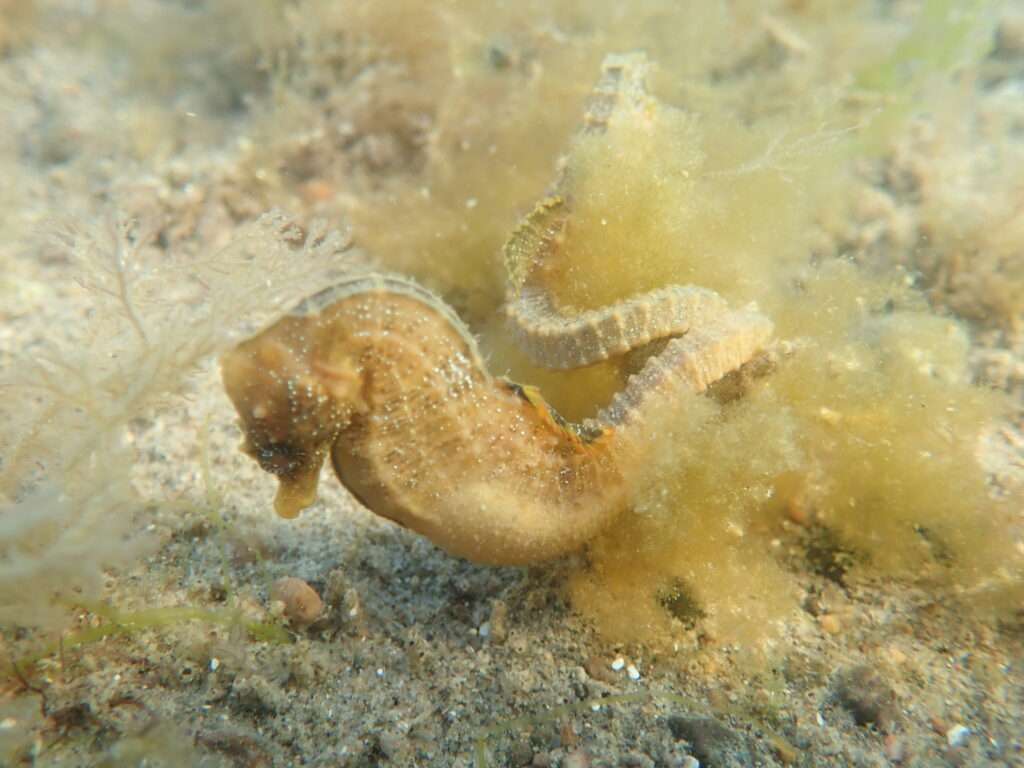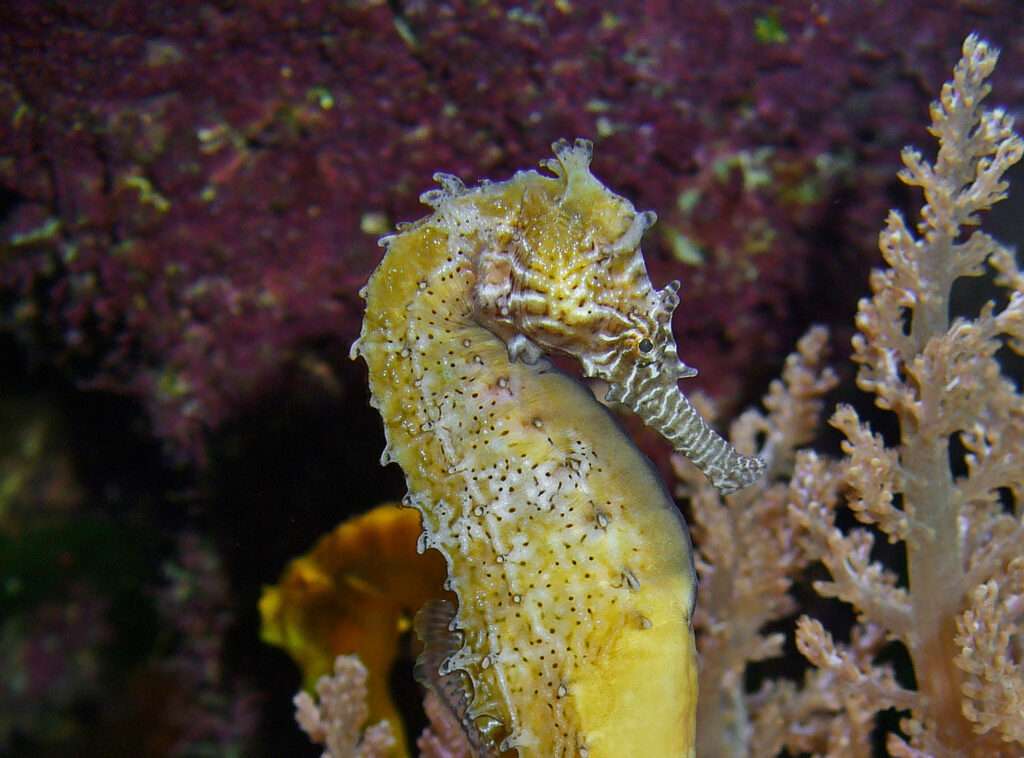
The saltwater fish species known as the Patagonian seahorse (Hippocampus patagonicus) belongs to the family Syngnathidae. From northeastern Brazil to Chubut, Argentina, it lives in coastal waters. It is typically found connected to natural or man-made substrates at shallow depths.
Physical Characteristics
Typically, about 6 to 15 centimeters (2.4-5.9 in) in length, H. patagonicus has low spines, a short snout, and a long tail. It has a modest ridge or wedge on its coronet. The colors of the individuals vary from light to dark brown, yellow, red, or orange. Small white spots and erratic dark striations can be seen on the body and head.

Habitat
In its native habitat, H. patagonicus can be found in Argentina’s shallow waters up to a depth of 15 meters (49 feet). In Brazil, people have been discovered in deeper waters up to a depth of 120 meters (390 ft). They are typically found affixed to seagrasses, sessile invertebrates (including sponges, ascidians, and polychaete worms), floating marine algae (Sargassum sp.), or artificial substrates.
Feeding
This carnivorous species’ individuals are opportunistic predators, which means they pounce on whichever animal is present in their surroundings at the time and is most numerous and vulnerable. They eat decapods and amphipods, including as species from the Gammaridae, Caprellidae, and Hiperidae families. Feeding habits are similar for all sizes and sexes.
Growth and Reproduction
The ovoviviparous H. patagonicus species uses an ovipositor to place its eggs into a male’s brood pouch, where they are fertilized and kept safe until the male gives birth to live young. The typical brood size and gestation duration for animals kept in captivity are 207 individuals and 19.6 days, respectively. Size of the offspring is 0.7 centimeters (0.28 in). During their first breeding season (spring and summer), both males and females appear to attain maturity at sizes around 11 centimeters (4.3 in). H. patagonicus has a two to three year life span.
Juveniles have reportedly shown rafting ability in San Antonio Bay, which could account for reports of the species in deeper waters. Rafting happens when young animals cling to floating substrates that currents then distribute. Rafting youngsters are vulnerable to being caught in seine nets, so while this broadens their dispersal area, it might also raise conservation concerns.
Table





